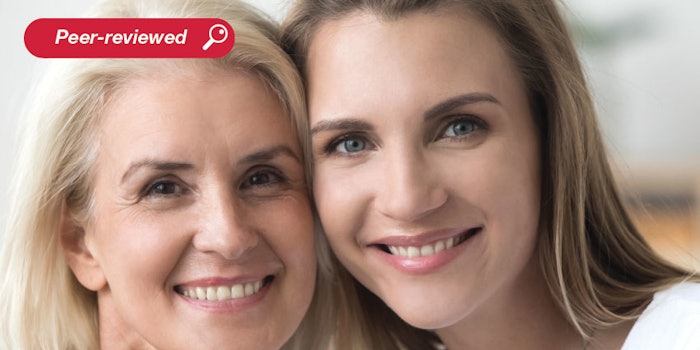
Read the full article in the February 2022 digital edition. . .
Hair plays an important role in our physical appearance. It ranks highest among the possible ways for women to express themselves, even found to be more important than smiling, clothes, complexion and makeup. It is also one of the few areas where women have some level of control by altering the length, style and color. By doing so, they can change the perception of themselves and ultimately showcase confidence and express their personality. Additionally, hair alters how women are perceived by others, their competency, individuality and character.
Hair health plays a large part in this created confidence and competency either from self-assessment or by others. These findings have been confirmed in research. For example, one study demonstrated that images of undamaged hair shown to 50 men and 50 women were perceived as younger, healthier and more attractive than images of damaged hair.1 There are many research articles and reviews that consider hair changes as a function of age, such as graying, diameter and density changes, but these articles do not link biology changes to hair, habit changes or even cultural environment associated with age and beauty.2 Thus, the objective of this article is to explore in more detail how perceptions of healthy hair vary as women age; what the contributing factors are, both culturally and biologically; and how this leads to different hair damage issues women face, as well as product solutions. The underlying premise is that perceptions of healthy hair and the product choices made are determined both by the cultural environment and the changing biology of hair.
Hair Damage Assessment
The first question is whether a women’s perception of their hair health changes as they age. A U.S. study of more than 500 women aged between 18-75 asked the women to assess their amount of damage on a five-point scale from no damage to severe damage. The percentage of women who answered "moderate to severe damage" was 20-25% for all age groups; the percentage decreased at ages 60-65, with 15% claiming "moderate or severe damage." In addition, 50% of this older group claimed to have no damage at all. Therefore, from 60-65 years, it appears women experience less damage but at all other ages, the level of perceived damage is consistent.
A related question was how concerned users were with hair damage and not unexpectedly, the older group was significantly less concerned about damage than all other ages. Most concerned were those in the 18-35 age group followed by the 35-60 age group. The younger age group also felt they had to work harder to get the style they wanted, indicating a generally higher dissatisfaction with their hair.
. . .Read more in the February 2022 digital edition. . .
References:
- Fink, B., Neuser, F., Deloux, G., Röder, S., Matts, P.J. (2013). Visual attention to and perception of undamaged and damaged versions of natural and colored female hair. J Cosmet Dermatol 12 1-7.
- Flagler, M.J., Schwartz, J.R., Robbins, C.R., Dawson, T.L. (2013). The effects of aging on hair – more than just amount. Practical Modern Hair Science. Allured Business Media (Carol Stream, IL) 451-491. Available at: https://www.semanticscholar.org/paper/The-Effects-of-Aging-on-Hair%E2%80%94More-Than-Just-Amount-Flagler-Schwartz/f01c63c1577b048f07075dea36ff50d4389c1f97











